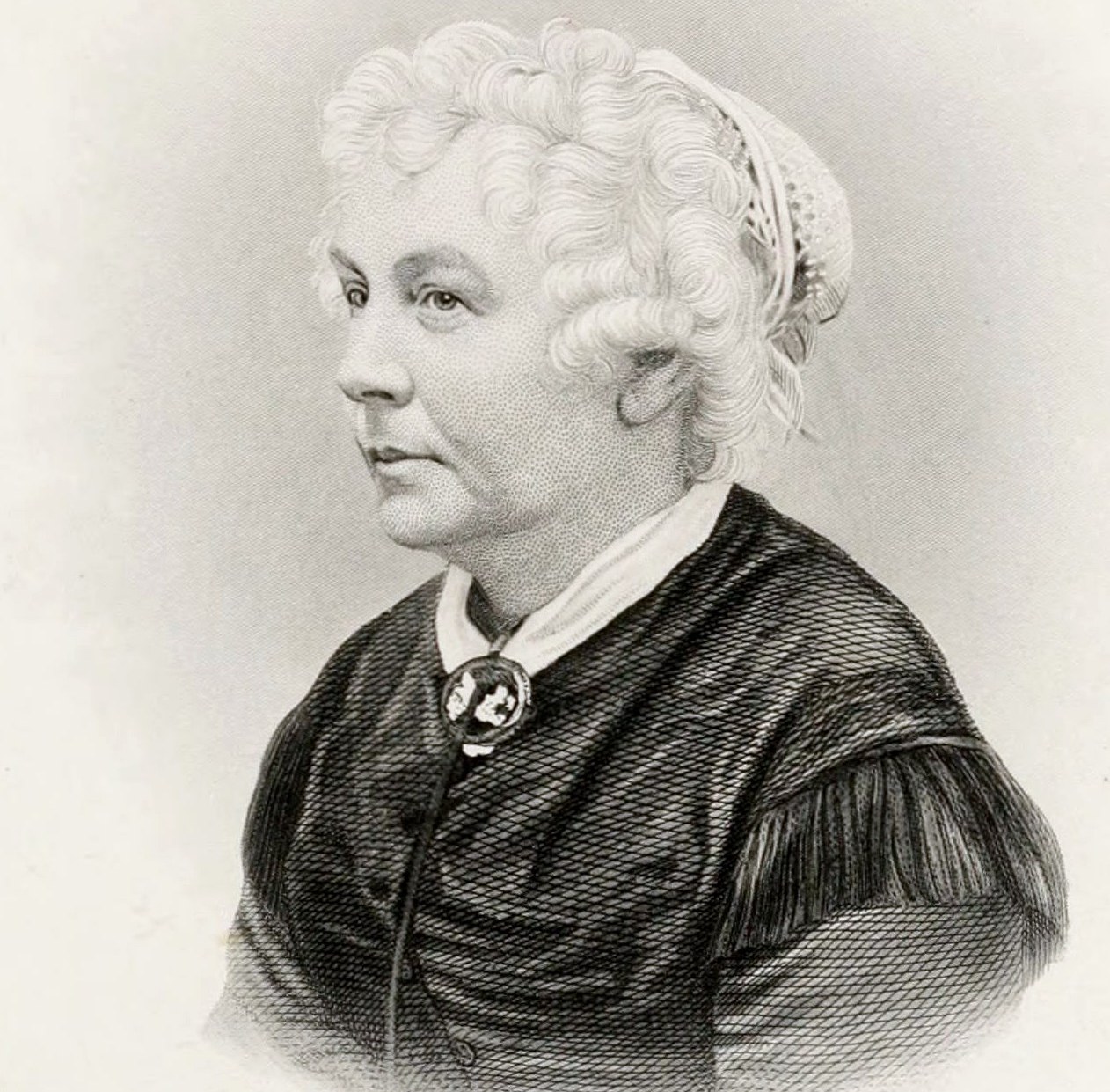Elizabeth Cady Stanton
Special to the Newsletter
by Michael F. Bishop
Elizabeth Cady Stanton was one of America’s greatest champions of women’s rights. A gifted writer and organizer, she devoted her life–and career–to gaining the vote for women. Her reforming impulse also made her a temperance campaigner and abolitionist, but the cause of civil rights for freedmen would cause deep divisions among her many followers.

Elizabeth Cady was born to privilege on November 12, 1815, in upstate New York, where her father was a prominent politician and she and her many siblings were attended by a phalanx of servants. Her parents provided her with an excellent education, and she showed considerable intellectual ability. As a student her religious skepticism manifested itself, and she later viewed Christianity as a force of oppression.
Her fierce independence did not prevent her from marrying abolitionist Henry Stanton in 1840, but during her wedding ceremony she refused to utter the customary vow of obedience to her husband. As she later commented, “I obstinately refused to obey one with whom I supposed I was entering into an equal relation.” Their marriage was enduring and produced seven children, but as their interests and priorities diverged, they often lived apart.
The most passionate and productive relationship in Stanton’s life was her partnership with Susan B. Anthony, with whom she founded The Revolution, a newspaper that promoted women’s rights. They were an effective pair; as Stanton observed, “In writing we did better work together than either could alone. While she is slow and analytical in composition, I am rapid and synthetic. I am the better writer, she the better critic.” Together they traveled, lectured, organized, and later co-wrote a multi-volume history of their campaign.
Stanton had already taken the lead in organizing the Seneca Falls Convention in 1848, at which hundreds of women gathered to give speeches and write resolutions calling for their equal treatment under the law. It was the first convention of its kind and thus a landmark in the cause of women’s rights. Many more such gatherings would follow–and whether personally in attendance or not–Stanton would continue to be a presiding spirit.
Though an abolitionist, Stanton was not a champion of civil rights for African-Americans, and many of her statements on the subject are jarring to read. She clashed with those abolitionists who wished to focus the reforming energies of the nation on the cause of black freedom and civil rights, with votes for women to come later. Stanton disagreed, and disappointed many of her supporters when observed, “It becomes a serious question whether we had better stand aside and let ‘Sambo’ walk into the kingdom first.” She called on “American women of wealth, education, virtue and refinement” to fight for suffrage so that “the lower orders of Chinese, Africans, Germans and Irish, with their low ideas of womanhood” would not “make laws for you and your daughters.”
But with the ratification of the Fifteenth Amendment, which declared that the right to vote “shall not be denied or abridged by the United States or by any State on account of race, color, or previous condition of servitude, the matter was settled. Stanton’s campaign would continue,
The partnership of Elizabeth Cady Stanton and Susan B. Anthony would endure unbroken for the rest of their lives. When the latter turned eighty Stanton wrote her a poem in tribute, which concluded with the lines: United down life’s hill we’ll glide, Whate’er the coming years betide— Parted only when first in time, Eternal joys are thine or mine.
Stanton died on October 26, 1902, and was buried next to the husband from whom she was often so distant in life. Not long before her death, Anthony had written to her, “It is fifty-one years since we first met, and we have been busy through every one of them, stirring up the world to recognize the rights of women.”
Their goal of women’s suffrage was still nearly two decades from being achieved. But few in the history of the movement had done more to lay the groundwork for the expansion of the franchise. And when in 1920 the Nineteenth Amendment was ratified, stating simply: “The right of citizens of the United States to vote shall not be denied or abridged by the United States or by any State on account of sex,” Stanton had a fair claim to be counted among its authors.
The following year, Stanton was immortalized in marble by sculptor Adelaide Johnson, who depicted her alongside fellow suffragette Lucretia Mott and her dear friend Anthony. Visitors to the United States Capitol who enter its vast rotunda observe the three women clustered together, silent witnesses to the political and legislative arena they did so much to enrich and expand.
Michael F. Bishop, a writer and historian, is the former executive director of the International Churchill Society and the Abraham Lincoln Bicentennial Commission.




